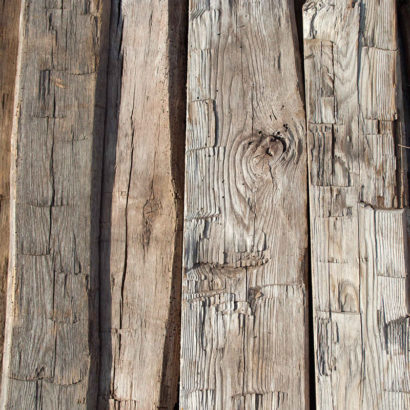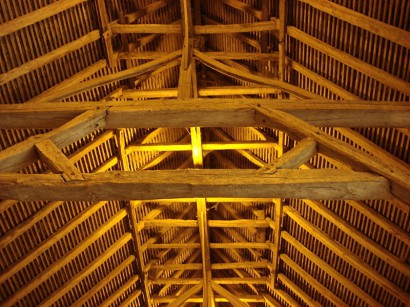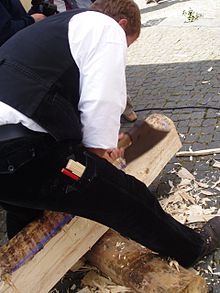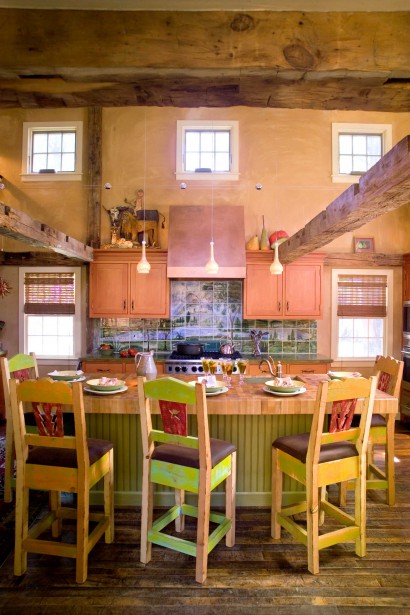
Before the proliferation of the sawmill, hand-hewing was the long, hard road to a square structural timber.
 As American settlers pushed westward into previously unoccupied forested territory, they cleared land for homes and early agricultural buildings. The process, although time-consuming and labor-intensive, was necessary, as sawmills were often too far from their settled plots of land for them to build with milled products. This, coupled with the need to clear forested land for building and agriculture, demanded the processing of fallen timber by hand, with axe, adze, and crosscut saw.
As American settlers pushed westward into previously unoccupied forested territory, they cleared land for homes and early agricultural buildings. The process, although time-consuming and labor-intensive, was necessary, as sawmills were often too far from their settled plots of land for them to build with milled products. This, coupled with the need to clear forested land for building and agriculture, demanded the processing of fallen timber by hand, with axe, adze, and crosscut saw.
Hand-hewing a square beam from a round log was one of the more skilled tasks involved in homestead logging. After felling a tree, limbing the fallen timber, and skidding the resulting log from the forest to the construction site, builders or farmers would buck the log to their desired length and begin the hewing.
The log was then secured on two smaller logs, upon which it could be rotated as new faces were hewn. With the log safely in place and unable to roll while being hewn, dimensional lines were etched, chalked, or visually sighted the length of the log, and the hewer would score the log every few inches. After scoring, rough amounts of material were removed in a process called ‘joggling’.
Next, either standing atop or alongside the log, the hewer would use an axe with a larger head – a broad axe or hewing axe – to hew the log with more accuracy and precision. Repeated four times, a freshly felled log was successfully transformed into a beam for building.
The final products were installed as structural timbers in homes and agricultural buildings throughout the United States.
Today, the modern sawmill and proliferation of affordable power tools have left the process of hand-hewing logs to devoted craftspeople and curious hobbyists. Hand-hewn beams are now valued aesthetically as pieces of salvaged Americana, and are reclaimed from barns and recycled into fireplace mantels, architectural details, and residential/commercial décor.
Most reclaimed lumber companies will source and stock hand-hewn beams for retail. Longleaf Lumber carries wholesale and retail hand-hewn beams in most dimensions and species for retail and local or long-distance shipping.


